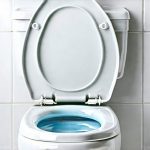Frequent urination, formally known as polyuria, is something most people experience at least occasionally. It could be triggered by simple things – enjoying a large glass of water on a hot day, consuming a caffeinated beverage, or feeling nervous before public speaking. However, when frequent peeing becomes significantly more noticeable and disruptive to your daily life, it’s natural to wonder if something deeper is going on. Many factors can contribute to this change, ranging from lifestyle habits and minor infections to underlying medical conditions that require attention. Understanding the nuances of polyuria is crucial for proactive health management and knowing when seeking professional evaluation is necessary.
This article aims to explore the relationship between frequent urination and potential kidney issues. It’s important to state upfront: frequent peeing isn’t automatically a sign of kidney problems. Many benign causes exist, and pinpointing the reason requires careful consideration. We will delve into the various reasons for increased urinary frequency, differentiate symptoms that warrant concern, and discuss when it’s appropriate to consult with a healthcare professional. The goal is to empower you with knowledge so you can better understand your body and make informed decisions about your health.
Understanding Frequent Urination: Causes Beyond the Kidneys
Frequent urination isn’t always about what’s wrong; often, it’s simply about how we live. A multitude of factors unrelated to kidney disease can dramatically increase how often we need to visit the bathroom. One common culprit is fluid intake – obviously, drinking more fluids leads to more urine production. However, certain beverages are particularly diuretic, meaning they encourage the body to eliminate water faster. These include caffeine (coffee, tea, soda), alcohol, and even carbonated drinks. Dietary choices play a role too; foods high in salt can cause the body to retain water, leading to increased urination as the kidneys work to restore balance.
Beyond lifestyle factors, some medical conditions other than kidney disease can also cause polyuria. Diabetes is a significant one – both Type 1 and Type 2 diabetes can lead to elevated blood sugar levels which pull fluid from tissues, resulting in increased urine production. Similarly, diabetes insipidus, a less common condition, affects the body’s ability to regulate fluids, leading to excessive thirst and urination. Certain medications, such as diuretics used to treat high blood pressure, intentionally increase urine output. Finally, anxiety can sometimes manifest as frequent urination; the stress response can affect bladder control and urge frequency. If you’re experiencing frequent urination alongside other symptoms, it may be time to consider if **glucose in urine** is a factor.
It’s vital to differentiate between genuinely frequent urination and a perceived problem. Keeping a bladder diary – recording when you urinate, how much fluid you drink, and any associated symptoms – can be incredibly helpful in identifying patterns and determining if your concern is justified. This information will also prove valuable during a consultation with your doctor.
When Frequent Peeing Signals Potential Kidney Issues
While many causes of polyuria are benign, it’s essential to recognize when increased urinary frequency might signal something more serious related to kidney function. The kidneys play a critical role in filtering waste products and excess fluids from the blood, maintaining electrolyte balance, and producing hormones that regulate blood pressure. When these functions are compromised, changes in urination patterns can occur. Chronic Kidney Disease (CKD), for example, often begins subtly with few noticeable symptoms in its early stages. However, as kidney function declines, you might experience increased frequency of urination, particularly at night (nocturia). If you suspect a connection to underlying conditions, it’s worth exploring **are kidney stones a hidden cause**?
However, the nature of the frequent urination differs in kidney issues compared to simple overhydration or diuretic consumption. In kidney problems, the urine may appear foamy, bloody, or cloudy. There can be a noticeable change in urine color. Other symptoms often accompany this increased frequency, such as fatigue, swelling in the ankles and feet (edema), loss of appetite, nausea, and difficulty concentrating. These accompanying symptoms are key indicators that warrant medical attention. A sudden change in urination – for example, going from infrequent to very frequent over a short period – should also prompt evaluation.
It’s crucial to understand that polyuria alone isn’t enough to diagnose kidney disease; further investigation is needed. Diagnostic tests, such as blood tests (to measure creatinine and BUN levels) and urine analysis, are essential for assessing kidney function and identifying any underlying issues. Early detection and management of kidney problems are critical for slowing the progression of CKD and preventing complications.
Recognizing Associated Symptoms: A Deeper Dive
The symptoms that accompany frequent urination can provide vital clues about its cause. Beyond those already mentioned – foamy urine, blood in the urine, edema, fatigue, loss of appetite, nausea – there are other indicators to watch for. Pain in the back or side (flank pain) can sometimes signal a kidney infection or stones. A feeling of incomplete bladder emptying, even after urinating, might indicate an obstruction or nerve issue affecting bladder function. Changes in urine odor or appearance should always be investigated.
- Consider these specific scenarios:
- Nocturia (waking up frequently at night to urinate) can suggest kidney problems, heart failure, or diabetes. If you’re concerned about nighttime urination, consider **is waking up to pee at night a sign of a UTI**?
- Difficulty urinating or a weak urine stream could indicate an enlarged prostate (in men) or other urinary tract obstruction.
- Burning sensation during urination is usually indicative of a urinary tract infection (UTI), which, if left untreated, can affect the kidneys.
It’s important to remember that these are just potential indicators and don’t definitively diagnose any condition. Self-diagnosing can be harmful. The best course of action is to consult with a healthcare professional who can accurately assess your symptoms and perform appropriate tests.
Kidney Infections and Their Impact on Urination
Kidney infections (pyelonephritis) are serious bacterial infections that often develop as a complication of UTIs. Symptoms of kidney infection frequently include frequent urination, but it’s usually accompanied by other distinct signs. These include fever, chills, flank pain, nausea, vomiting, and a general feeling of being unwell. The urine itself may appear cloudy or bloody, and there’s often a burning sensation during urination.
Kidney infections require prompt medical treatment with antibiotics to prevent the infection from spreading and causing permanent kidney damage. Ignoring the symptoms can lead to sepsis, a life-threatening condition. If you suspect a kidney infection, seek immediate medical attention. Diagnostic tests typically include urine analysis and blood tests to confirm the diagnosis and identify the causative bacteria.
The Role of Kidney Stones in Urinary Changes
Kidney stones are hard deposits made of minerals and salts that form inside your kidneys. While many small kidney stones pass through the urinary tract without causing significant symptoms, larger stones can obstruct the flow of urine and cause intense pain, frequent urination, and other complications. Symptoms associated with kidney stones include severe flank pain (often radiating to the groin), blood in the urine, nausea, vomiting, and a persistent urge to urinate.
If you suspect you have kidney stones, it’s essential to see a doctor for evaluation. Diagnostic tests may include imaging studies such as X-rays, CT scans, or ultrasounds to locate the stone(s). Treatment options vary depending on the size and location of the stones, ranging from pain management and increased fluid intake to more invasive procedures like lithotripsy (using shock waves to break up the stones) or surgery. Preventative measures, such as staying well-hydrated and modifying your diet, can help reduce your risk of developing kidney stones. Understanding **what is the appearance of kidney stones in real-time ultrasound** can aid in diagnosis.
Disclaimer: This article is for informational purposes only and does not constitute medical advice. Always consult with a qualified healthcare professional for any health concerns or before making any decisions related to your health or treatment.





















